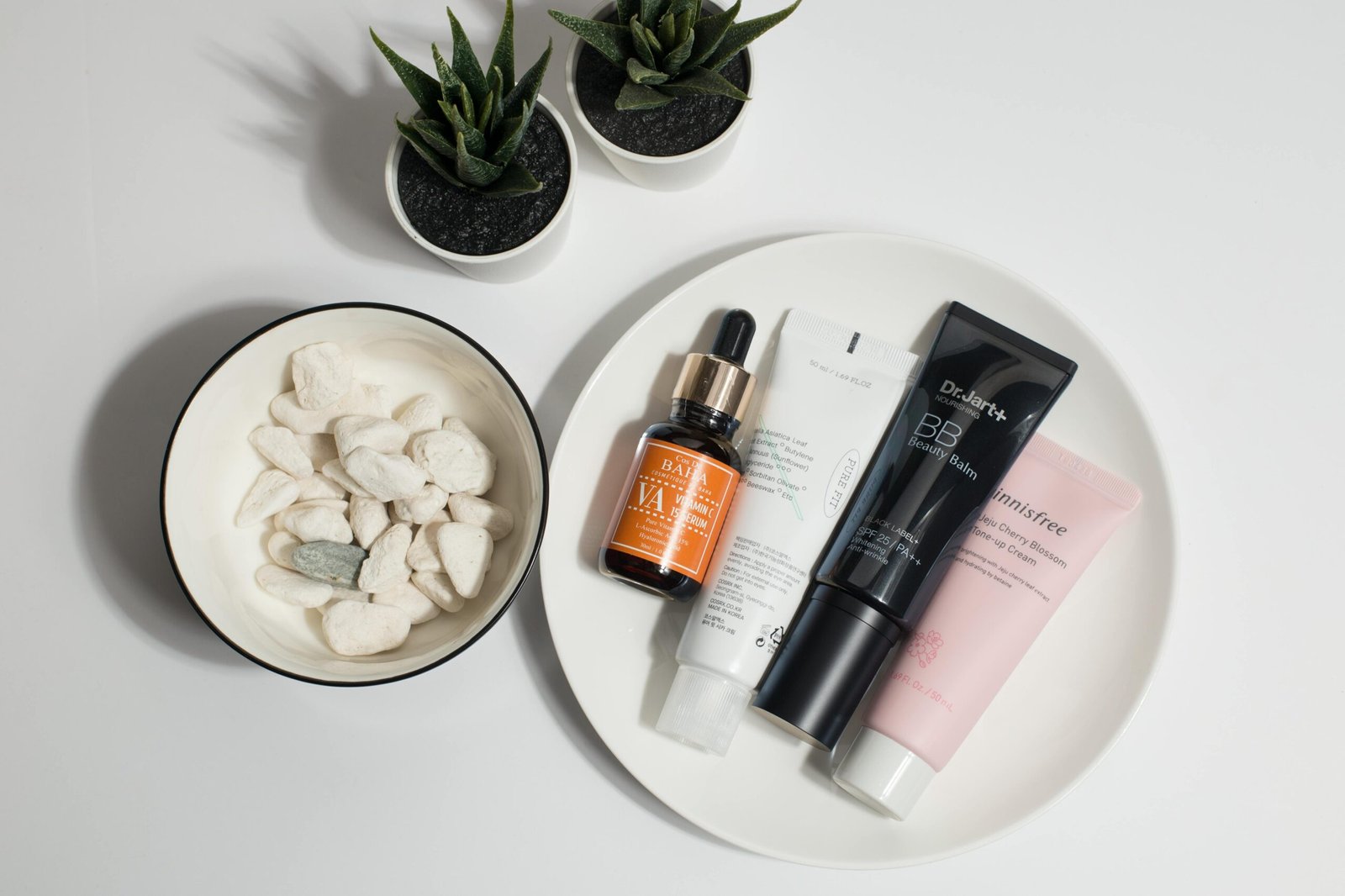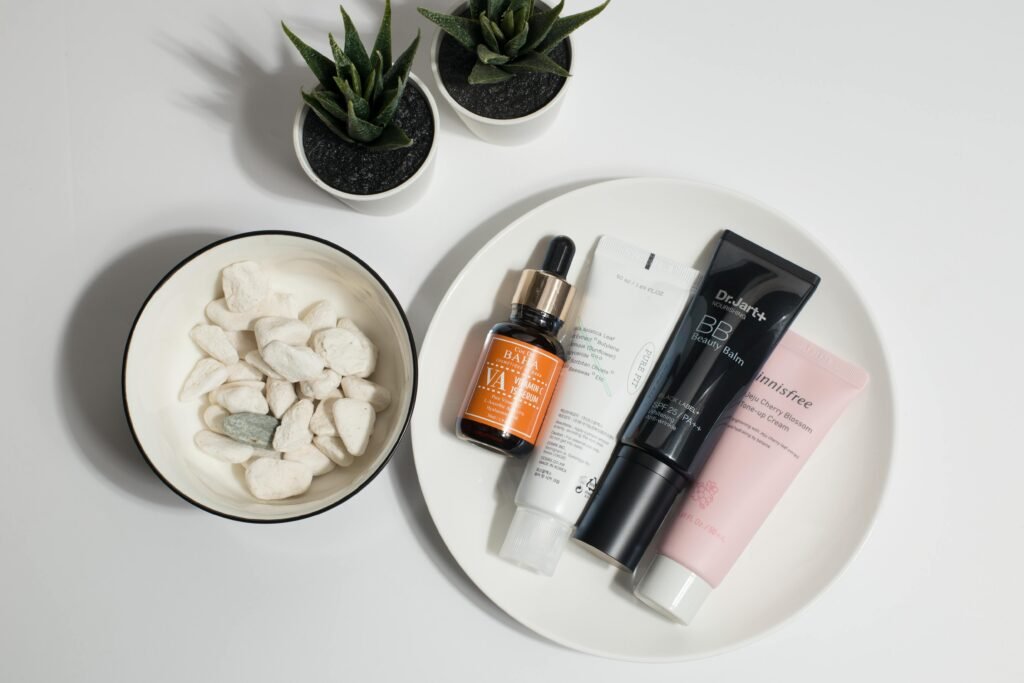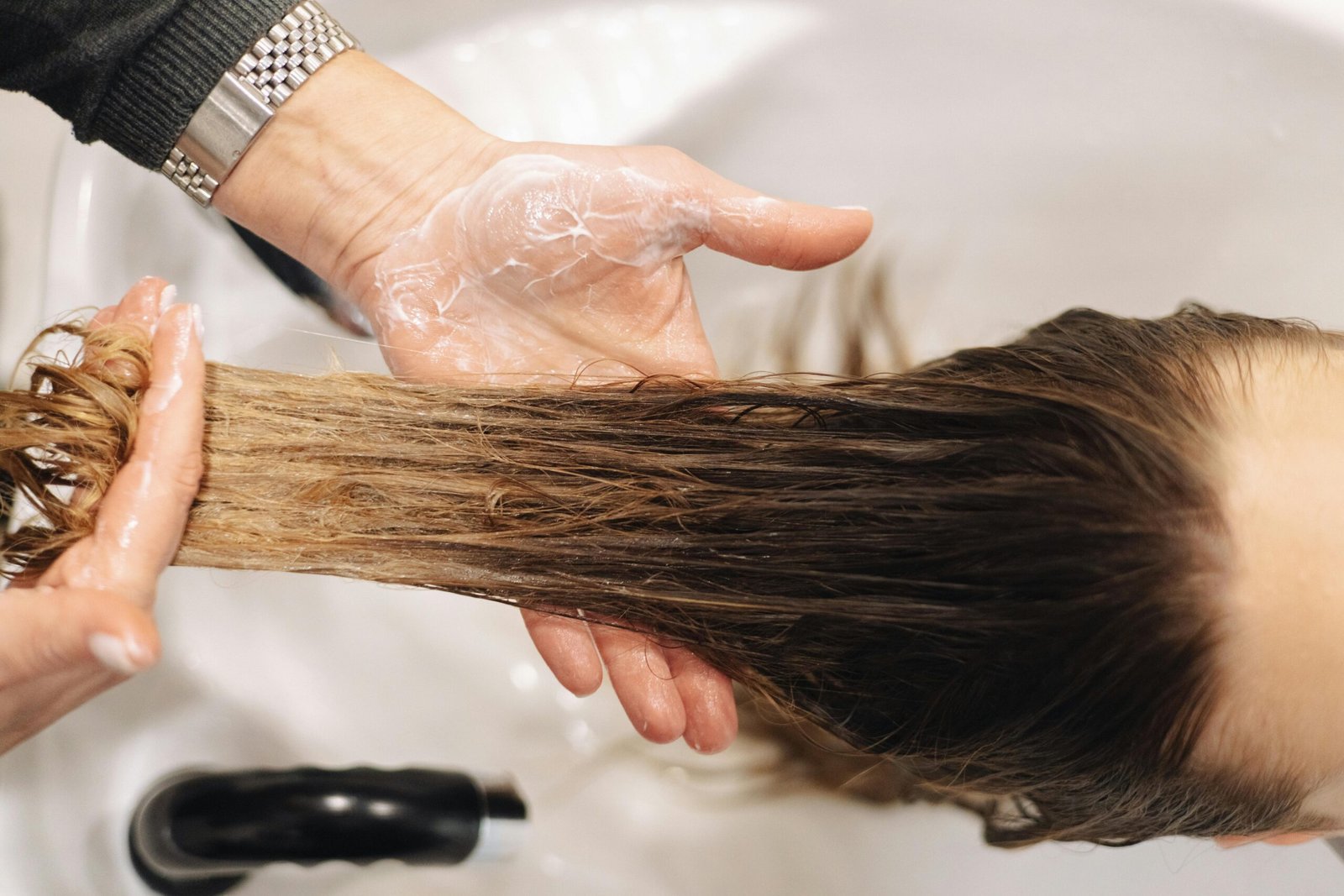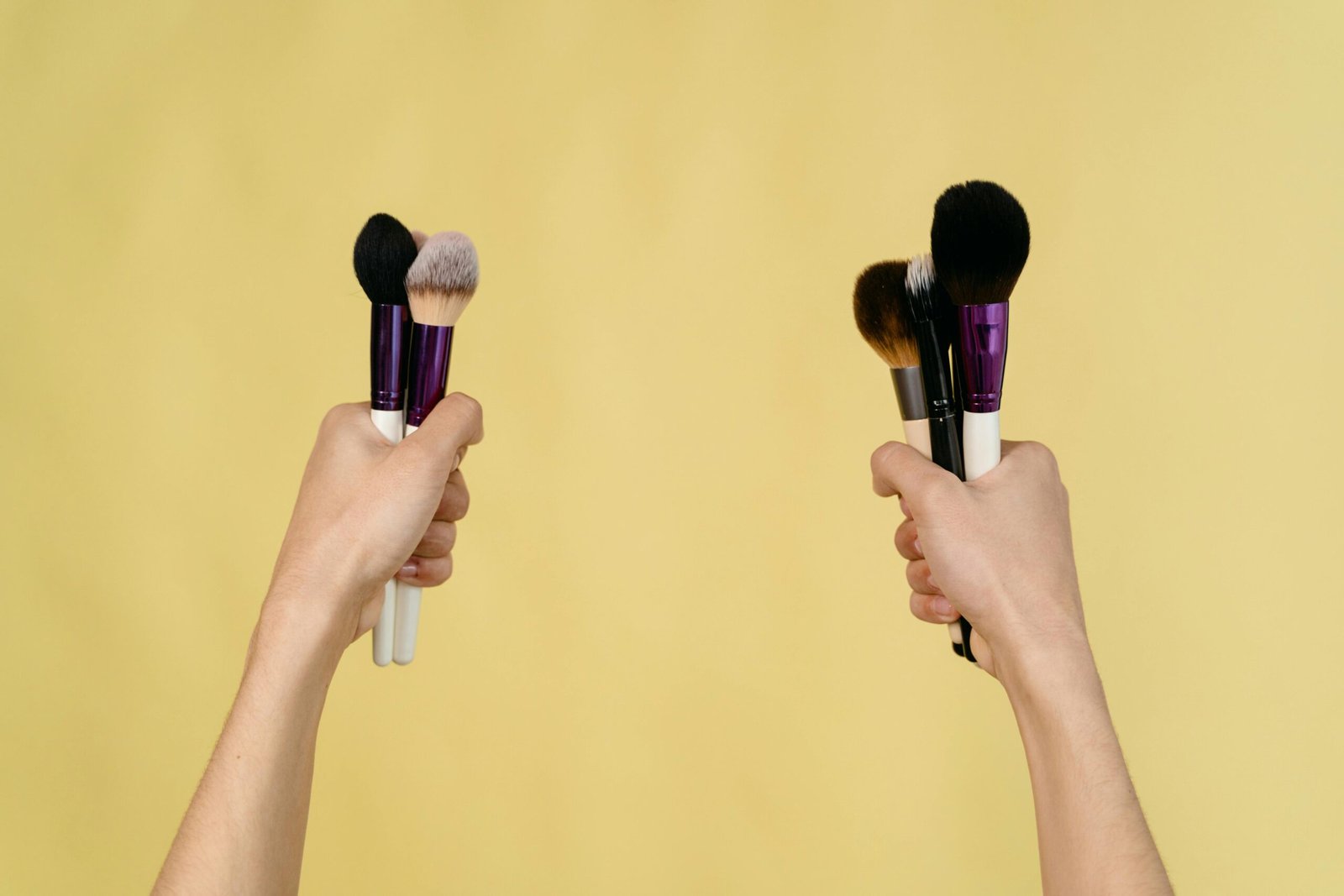Bare‑Faced Beauty: BB Cream vs. CC Cream Full Comparison

Introduction
In the world of minimalist makeup, BB (Blemish Balm) creams and CC (Color‑Correcting) creams have emerged as multitasking marvels—combining skincare benefits with light to medium coverage, and offering simplified routines for those who prefer a “no‑makeup” makeup look. In this exhaustive guide of over 6,000 words, we unpack the origins, formulations, benefits, and ideal use cases of BB versus CC creams, empowering you to choose the perfect product for your skin type, tone, and aesthetic goals. You’ll learn:
- Historical Origins: How BB and CC creams evolved from Korean beauty innovations into global staples.
- Key Formulation Differences: Ingredient breakdowns—actives, pigments, UV filters, and texture profiles.
- Coverage & Finish: Comparative analyses of pigmentation, blendability, dewy versus matte effects.
- Skincare Benefits: Moisturization, anti‑aging peptides, antioxidants, sun protection factors (SPF).
- Skin Type and Concerns: Matching dry, oily, combination, sensitive, acne‑prone, and mature skin to BB or CC formulas.
- Shade Ranges and Inclusivity: Evaluating brands on diversity of tones, undertones, and custom blend options.
- Application Techniques: Tools and methods—fingertips, brushes, sponges—for flawless results.
- Seasonal and Climate Adaptations: Selecting lightweight vs. hydrating textures for summer, winter, humid, or arid conditions.
- Top 20 Products Reviewed: In‑depth profiles of leading BB and CC creams across price points.
- Comparative Summary Table: Quick reference of key specs—SPF, coverage, finish, skin benefits.
- FAQs and Expert Tips: Answers to common questions on layering, color correction, and longevity.
- Routine Integration: How to incorporate BB or CC into skincare‑first regimens or under heavier makeup bases.
- Travel and On‑the‑Go Kits: Portable picks and refill strategies for busy lifestyles.
Whether you’re seeking light coverage that blurs imperfections, a daily SPF safeguard, or a color‑correcting canvas to minimize redness and sallowness, this guide offers the definitive, head‑to‑head comparison to elevate your bare‑faced beauty.
1. The Evolution of BB and CC Creams
1.1 Origins of BB Cream
- Early 1960s: German dermatologist Dr. Christine Schrammek formulates a “blemish balm” to soothe post‑procedure skin, offering mild coverage and healing benefits.
- 2005: Korean beauty brands adapt and commercialize BB creams with lightweight textures, high SPF, and skin‑treatment actives.
- 2012–2015: Western adoption accelerates; BB creams enter major beauty markets with localized formulations.
1.2 Emergence of CC Cream
- 2013: To address color‑correcting needs—neutralizing redness, sallowness—K‑Beauty innovators introduce CC creams.
- Market Differentiation: CC creams emphasize pigment correction (green for redness, peach for dark circles) plus anti‑aging ingredients.
- Global Expansion: By 2016, major brands from Asia to North America launch CC lines tailored to seasonal skin concerns and broader shade ranges.
1.3 Beyond BB and CC: The Rise of DD and EE Creams
- DD (Dynamic Do‑All/Defense) Creams: Marketed as hybrid skin protectors with anti‑aging and anti‑oxidant boosts.
- EE (Extra Exfoliating/Even Enhancing) Creams: Emerging niche focusing on exfoliating acids or even complexion‑enhancing pigments.
While DD and EE creams build on the BB/CC framework, this guide focuses on the core BB vs. CC comparison.
2. Formulation Fundamentals
2.1 Base Ingredients Comparison
| Component | BB Cream | CC Cream |
|---|---|---|
| Emollients | Typically richer: squalane, glycerin | Moderate: lighter silicones, esters |
| Pigments | Medium opacity titanium dioxide, iron oxides | Higher-pigment dispersion, color-correcting pigments |
| Actives | Niacinamide, peptides, ceramides | Niacinamide, vitamin C derivatives, peptides |
| SPF Ingredients | Physical (ZnO, TiO₂), chemical filters | Often chemical filters for lighter feel |
| Texture Profile | Cream-to-fluid, more dewy finish | Fluid-to-gel, often semi-matte finish |
| Antioxidants | Green tea, vitamin E | Additional vitamin C, niacinamide for brightening |
2.2 Skincare Benefits
- Moisturization: BB creams lead with hydrating ingredients to plump and smooth.
- Brightening: CC creams frequently incorporate vitamin C derivatives and licorice root extract to correct hyperpigmentation.
- Anti‑Aging: Both may include peptides and ceramides, but CC formulations often emphasize collagen-support ingredients.
- Sun Protection: BB creams traditionally boast higher SPF (SPF 30–50) versus CC creams (SPF 20–30) for everyday wear.
3. Coverage, Pigmentation & Finish
3.1 Coverage Spectrum
- BB Creams: Light to medium coverage; ideal for slight redness and uneven tone.
- CC Creams: Medium coverage; pigments strategically neutralize specific discolorations (redness, dark spots).
3.2 Finish Characteristics
- Dewy vs. Semi‑Matte: BB creams lean dewy—healthy glow; CC creams trend semi‑matte—soft-focus.
- Longevity: BB formulas may require touch‑ups in oily zones; CC’s slightly drier base enhances staying power.
3.3 Blendability
- Both types blend easily with fingertips; CC gels often require buffing brushes or damp sponges for seamless finish.
4. Skin Type and Concern Matching
4.1 Dry and Dehydrated Skin
- Ideal: Rich, emollient BB creams with hyaluronic acid, ceramides, shea butter.
- Avoid: Matte CC gels that may cling to dry patches.
4.2 Oily and Acne‑Prone Skin
- Ideal: Lightweight CC creams with oil‑control silica, niacinamide for sebum regulation.
- Avoid: Heavy BB creams that increase shine.
4.3 Combination Skin
- Strategy: Use BB cream on drier areas (cheeks), CC cream in T-zone for oil control and color correction.
4.4 Sensitive or Rosacea‑Prone Skin
- Ideal: BB creams enriched with calming oat extract, allantoin; fragrance-free CC options.
- Evaluate: Patch-test for potential irritants like chemical SPF filters.
4.5 Mature or Hyperpigmented Skin
- Ideal: CC creams with encapsulated vitamin C, peptides for brightening, smoothing.
- Benefit: Medium coverage masks discoloration without heavy foundation.
5. Shade Range & Inclusivity
5.1 Evaluating Brands
- Leading brands now span at least 10–20 shades each; inclusive lines (Fenty, IT Cosmetics, Clinique) exceed 30 tones.
- Undertone variety: cool, neutral, warm labels ensure accurate match.
5.2 Custom Blend Techniques
- Mixing two shades tailors custom matches; blending BB and CC creams can modulate coverage and finish.
6. Application Techniques
6.1 Fingertips
- Warm product, press into skin for natural finish. Best for BB creams.
6.2 Brushes
- Flat buffing brushes distribute CC gels and medium-pigment formulas evenly.
6.3 Sponges
- Damp beauty sponges sheer and diffuse both formulas, excellent for cream‑gel hybrids.
6.4 Layering
- Primer → BB/CC → Concealer (as needed) → Powder setting for longevity.
7. Seasonal & Climate Adaptations
7.1 Summer Heat & Humidity
- Opt for oil‑control CC creams with SPF; follow with mattifying powder in T‑zone.
7.2 Winter Dryness
- Choose hydrating BB creams; layer over rich moisturizer and skip powder.
7.3 Transitional Spring/Fall
- Blend BB and CC to balance hydration, coverage, and shine control.
8. Top 20 Products Reviewed
A deep dive into twenty standout BB and CC creams across drugstore, mid‑tier, and prestige ranges:
- Missha M Perfect Cover BB Cream SPF42 – Korean cult favorite, medium coverage, high SPF.
- IT Cosmetics Your Skin But Better CC+ Cream – Full coverage, SPF 50+, anti‑aging peptides.
- Maybelline Dream Fresh BB – Lightweight, hydrating, sheer coverage.
- Clinique Moisture Surge CC Cream – Dewy finish, SPF 30, color correction.
- Garnier SkinActive BB Cream – Affordable, oil‑free, broad spectrum SPF.
- Supergoop! CC Screen 100% Mineral CC Cream SPF50 – Mineral filters, neutralizes redness.
- Bobbi Brown Nude Finish Illuminating BB Cream – Light reflectors, skin clarity.
- Erborian CC Cream High Definition – Soft focus powder beads, brightening.
- Erborian BB Cream Aqua – Gel‑cream hybrid, intense hydration.
- IT Cosmetics CC+ Illumination – Luminous, color boost, anti‑aging.
- Smashbox Camera Ready BB Cream – Photo‑ready matte finish, SPF 35.
- Clinique Age Defense CC Cream – Lightweight, antioxidants, SPF 30.
- L’Oréal Paris True Match Lumi CC Cream – Illuminating pigments, medium coverage.
- La Roche‑Posay BB Blur – Blur technology, SPF 20, non‑comedogenic.
- Charlotte Tilbury Magic Cream CC Cream – Rich hydration, color adapt.
- Youth to the People Superberry Hydrate + Glow CC Cream – Clean ingredients, glow.
- Bobbi Brown Intensive Skin Serum Foundation – Serum‑cream blurring formula.
- NARS Pure Radiant Tinted Moisturizer – Skipping full BB/CC, but close hybrid.
- Missha For Men Aqua BB Cream – Grooming line, hydrating, matte finish.
- BareMinerals Complexion Rescue Tinted Hydrating Gel Cream – Skin‑like, sheer.
Each reviewed for coverage, finish, SPF, skincare actives, shade range, and packaging/travel convenience.
9. Comparative Summary Table
| Brand & Product | Type | Coverage | Finish | SPF | Key Active | Shades |
|---|---|---|---|---|---|---|
| Missha M Perfect Cover BB | BB | Medium | Dewy | 42 | Niacinamide | 10 |
| IT Cosmetics CC+ | CC | Full | Semi‑Matte | 50 | Peptides | 12 |
| Maybelline Dream Fresh BB | BB | Sheer | Dewy | 30 | Glycerin | 3 |
| Clinique Moisture Surge CC | CC | Light‑Medium | Dewy | 30 | Hyaluronic Acid | 5 |
| Garnier SkinActive BB | BB | Medium | Natural | 25 | Vitamin C | 5 |
| Supergoop! CC Screen Mineral | CC | Light‑Medium | Matte | 50 | Zinc Oxide | 6 |
| Bobbi Brown Nude Illuminating BB | BB | Light‑Medium | Satin | 15 | Vitamin E | 7 |
| Erborian CC HD | CC | Medium | Soft‑Focus | 20 | Ginseng Extract | 4 |
| Clinique Age Defense CC | CC | Light‑Medium | Dewy | 30 | Peptides | 4 |
| Smashbox Camera Ready BB | BB | Medium | Matte | 35 | Antioxidants | 6 |
10. FAQs and Expert Tips
Q1: Can I layer CC over BB or vice versa?
A: Yes—apply BB for hydration and sheer coverage, then spot‑apply CC for targeted color correction.
Q2: How to avoid pilling?
A: Allow primers and moisturizers to fully absorb (1–2 minutes) before BB/CC application. Use sparing layers.
Q3: Do BB/CC creams replace foundation?
A: For no‑makeup days, yes. For special events, they serve as excellent bases under fuller foundations.
Q4: Are BB and CC suitable for mature skin?
A: BB creams with peptides and hydrating actives plump fine lines; CC creams with antioxidants brighten and firm.
Q5: Can I use BB/CC on blemish‑prone skin?
A: Choose oil‑free, non‑comedogenic formulas with salicylic acid or niacinamide to treat and conceal.
11. Routine Integration
Morning: Cleanse → Tone → Serum → Moisturizer → Primer → BB/CC → Concealer → Powder.
Evening Touch‑Up: Blot oil → Re‑apply BB/CC sparingly → Light powder.
12. Travel & On‑the‑Go Kits
Compact tubes, multi‑sample palettes, and refillable compacts ensure you never skip your BB/CC when away from home. Look for refill pouches to reduce plastic waste.
Conclusion
BB creams and CC creams have redefined minimal makeup, blending skincare with smart coverage and sun protection. BB creams excel at hydrating and evening tone with a radiant finish, while CC creams specialize in color correction, brightening, and slightly more coverage with a refined matte or soft‑focus effect. By assessing your skin type, coverage needs, tone corrections, and climate, you can select—or even blend—your ideal hybrid product for effortless, bare‑faced beauty that enhances rather than hides your natural complexion. With this comprehensive comparison, recipes for application, and curated product recommendations, you are fully equipped to embrace light, luminous beauty every day.







